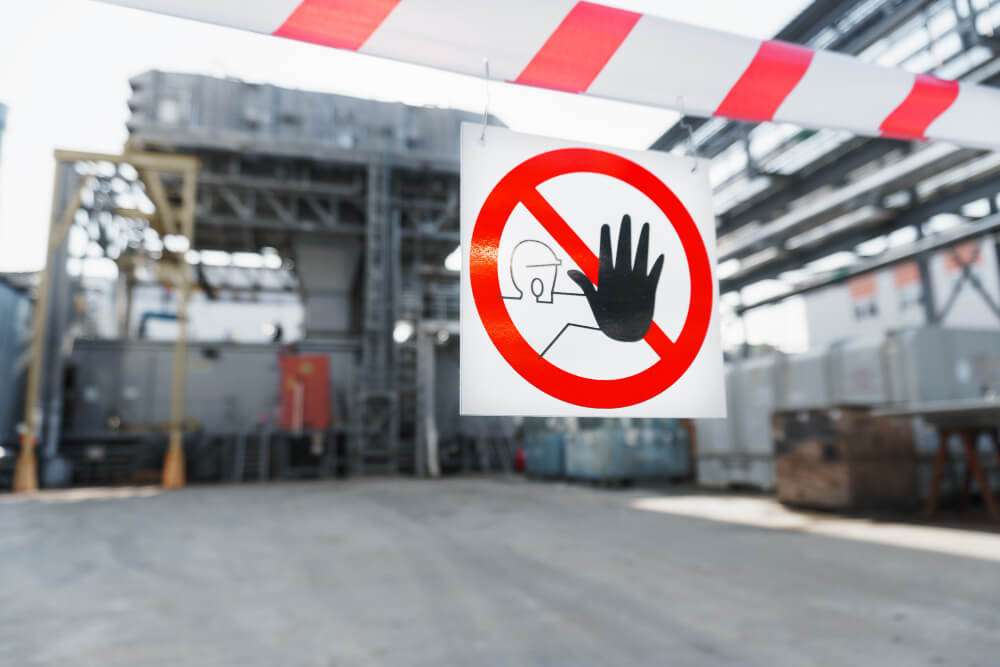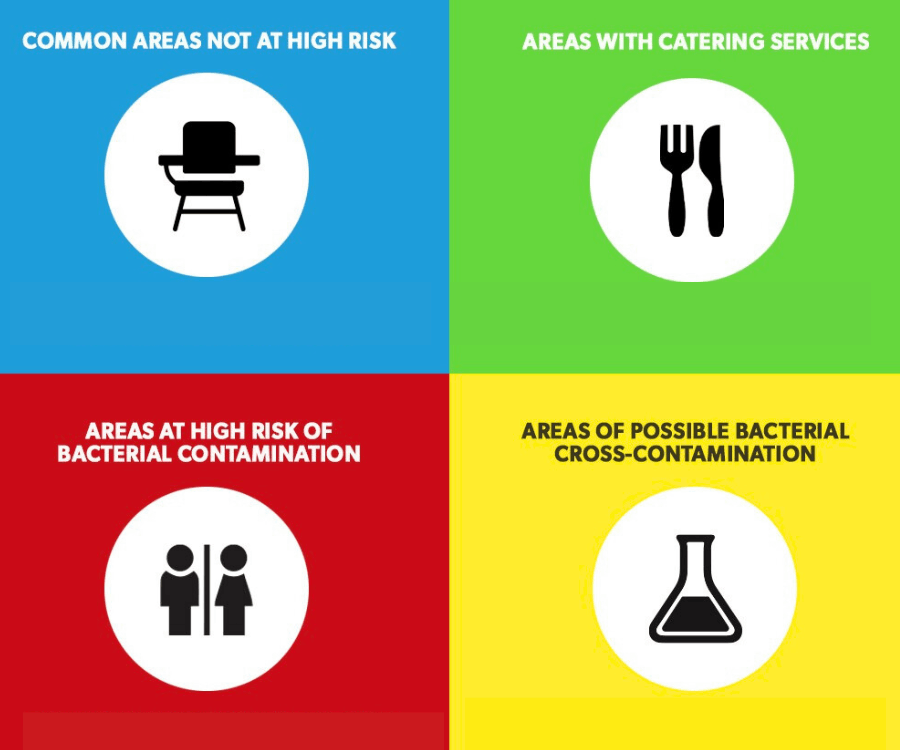
Ensuring workplace safety is a top priority for every workplace and organization. One effective way to promote safety and prevent accidents is by utilizing appropriate safety signs. Safety signs serve as visual indicators of potential hazards. It provides important information to employees and visitors.
In this guide, we will explore the importance of workplace safety signs, their various applications, color coding, and best practices for their use.
Why Do Workplace Safety Signs Matter?
Workplace safety signs are crucial to maintaining a safe and healthy work environment. They serve as an effective communication medium to convey important safety messages and warnings.
Employers can effectively remind employees and visitors of potential hazards, precautions, and emergency procedures by displaying safety signs. This helps to prevent accidents and injuries, creating a culture of safety within the organization.
Furthermore, safety signs are essential for compliance with regulatory standards. Organizations must adhere to specific safety regulations and guidelines set forth by agencies such as the Occupational Safety and Health Administration (OSHA).
Failure to display appropriate safety signs can result in penalties and legal consequences. Therefore, employers must prioritize safety signs for their overall safety program.
Types Of Safety Signs In The Workplace

Safety signs come in various forms, each serving a specific purpose. Understanding the different types of safety signs and their meanings is essential for creating a thorough safety signage system in the workplace.
Here are the key types of safety signs commonly used:
Prohibition Signs
Prohibition signs indicate actions or behaviors that are not allowed in a specific area. These signs feature a red circular shape with a white symbol or text inside, crossed out diagonally with a red line.
Examples of prohibition signs include “No Smoking,” “No Entry,” and “No Cell Phones.”
Warning Signs
Warning signs alert individuals of potential hazards or dangers in a particular area. These signs feature a yellow triangular shape with a black symbol or text inside.
Examples of warning signs include “Caution: Wet Floor,” “High Voltage,” and “Beware of Falling Objects.”
Mandatory Signs
Mandatory signs are used to display actions that must be taken or safety equipment that must be worn in a specific area. These signs feature a blue circular shape with a white symbol or text inside.
Examples of mandatory signs include “Safety Glasses Must Be Worn,” “Ear Protection Required,” and “Keep Door Closed.”
Emergency Signs
Emergency signs are used to show emergency exits, emergency equipment, and emergency procedures. These signs feature a green rectangular shape with white symbols or text inside.
Examples of emergency signs include “Emergency Exit,” “Fire Extinguisher,” and “Emergency Evacuation Route.”
Fire Safety Signs
Fire safety signs are specifically used to indicate the location of fire-fighting equipment, emergency exits, and evacuation routes.
These signs feature a red rectangular shape with white symbols or text inside. Examples of fire safety signs include “Fire Alarm,” “Fire Extinguisher,” and “Fire Assembly Point.”
First Aid Signs
First aid signs indicate the location of first aid equipment and facilities. These signs feature a green rectangular shape with white symbols or text inside.
Examples of first aid signs include “First Aid Kit,” “Eye Wash Station,” and “Emergency Shower.”
Safety Instruction Signs
Safety instruction signs provide specific instructions or guidelines related to safety procedures or precautions. These signs feature a white rectangular shape with black symbols or text inside.
Examples of safety instruction signs include “Wear Protective Gloves,” “Do Not Touch,” and “Keep Area Clean.”
Color Coding Of Safety Signs

Colors plays a vital role in safety signs as they convey information quickly and effectively. The American National Standards Institute (ANSI) has established color coding standards for safety signs.
Knowing these color codes is essential for properly interpreting safety signs in the workplace. Take a look at the breakdown of the color coding and their meanings:
1. Red
Red safety signs indicate immediate or potential danger. They are used for fire safety, emergency stop, and prohibition signs. Red signifies the need for immediate attention and action.
2. Yellow
Yellow safety signs show caution and potential hazards. It signifies the need to be alert and take precautions.They are used for warning signs, such as caution signs for slippery floors or electrical hazards.
3. Blue
Blue signifies the need to comply with specific instructions. They are used for mandatory signs that indicate the use of personal protective equipment, such as safety glasses or hard hats..
4. Green
Green safety signs indicate safety information and emergency escape routes. Green signifies safety and the location of safety-related facilities. They are used for emergency exits, first aid, and safety instruction signs.
5. Orange
Orange safety signs indicate potential hazards or dangers related to machinery or equipment. It signifies the need for extra attention and awareness. They are used for warning signs that caution against specific machinery-related risks.
6. Purple
Purple safety signs indicate potential radiation hazards. They are used in areas where radiation hazards are present, such as in nuclear facilities or laboratories. Purple signifies the presence of ionizing radiation.
7. Black And White
Black and white safety signs indicate specific regulations or instructions. They are used for safety instruction signs that provide specific guidelines or requirements. Black and white signify the need to follow specific rules or procedures.
Best Practices For Workplace Safety Signs
To ensure the effectiveness of workplace safety signs, it is essential to follow best practices for their design, placement, and maintenance. Take a look at the key best practices to consider:
1. Use Clear And Concise Messaging
Safety signs should communicate messages clearly and concisely. Use simple language and easily recognizable symbols to convey information effectively. Avoid complex wording or excessive details that may cause confusion.
2. Ensure Visibility And Legibility
Safety signs should be obvious and easily legible from a distance. Use appropriate colors, font sizes, and contrast to maximize visibility.
Consider the lighting conditions in the specific area where the sign will be displayed.
3. Display Signs At Eye Level
Place safety signs at eye level to ensure they are easily noticeable and readable. Avoid placing signs where they may be obstructed or hidden from view.
Consider the height of individuals who will be interacting with the signs.
4. Use Pictograms And Symbols
Incorporate pictograms and symbols into safety signs to enhance understanding, particularly for individuals with language barriers.
Pictograms and symbols are universally recognizable and can facilitate quick comprehension of safety messages.
5. Provide Training And Education
Ensure that employees receive proper training and education regarding the meaning and importance of safety signs in the workplace.
Train them on the specific safety protocols associated with different signs and how to respond in emergencies.
6. Display Signs In Multiple Languages
If your workplace has a diverse workforce, consider displaying safety signs in multiple languages to ensure comprehension for all employees. This helps to eliminate language barriers and promotes inclusivity in safe communication.
Conclusion
Workplace safety signs are essential for promoting safety, preventing accidents, and communicating important information in the workplace. Organizations can create a comprehensive safety signage system that contributes to a safety culture by understanding the different types of safety signs.
Prioritizing safety signs demonstrates a commitment to the well-being of employees and visitors while also ensuring compliance with regulatory standards. Remember, safety signs are not just visual aids but critical components in maintaining a safe and healthy work environment.

